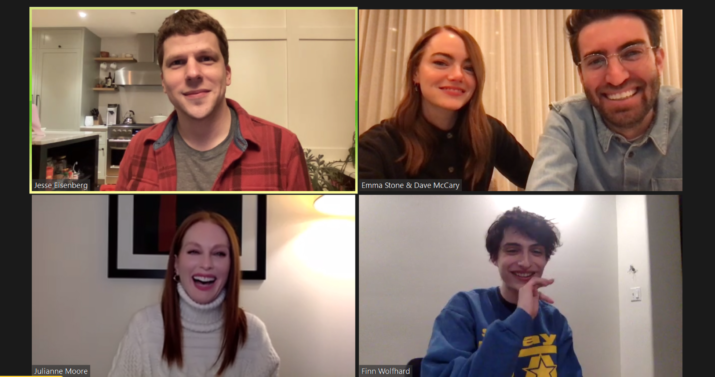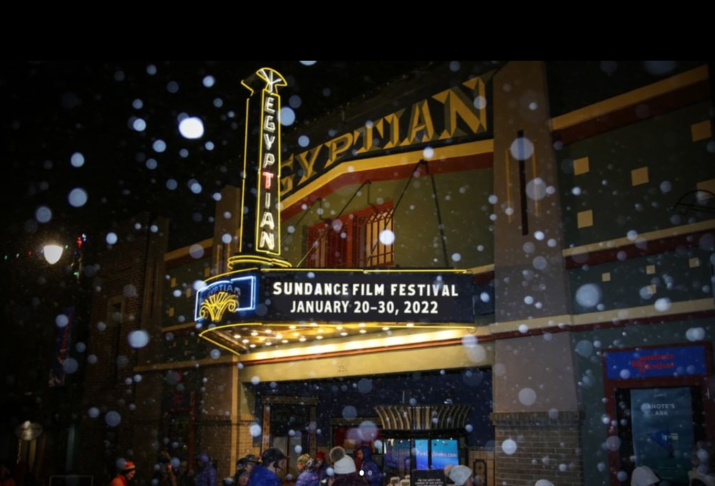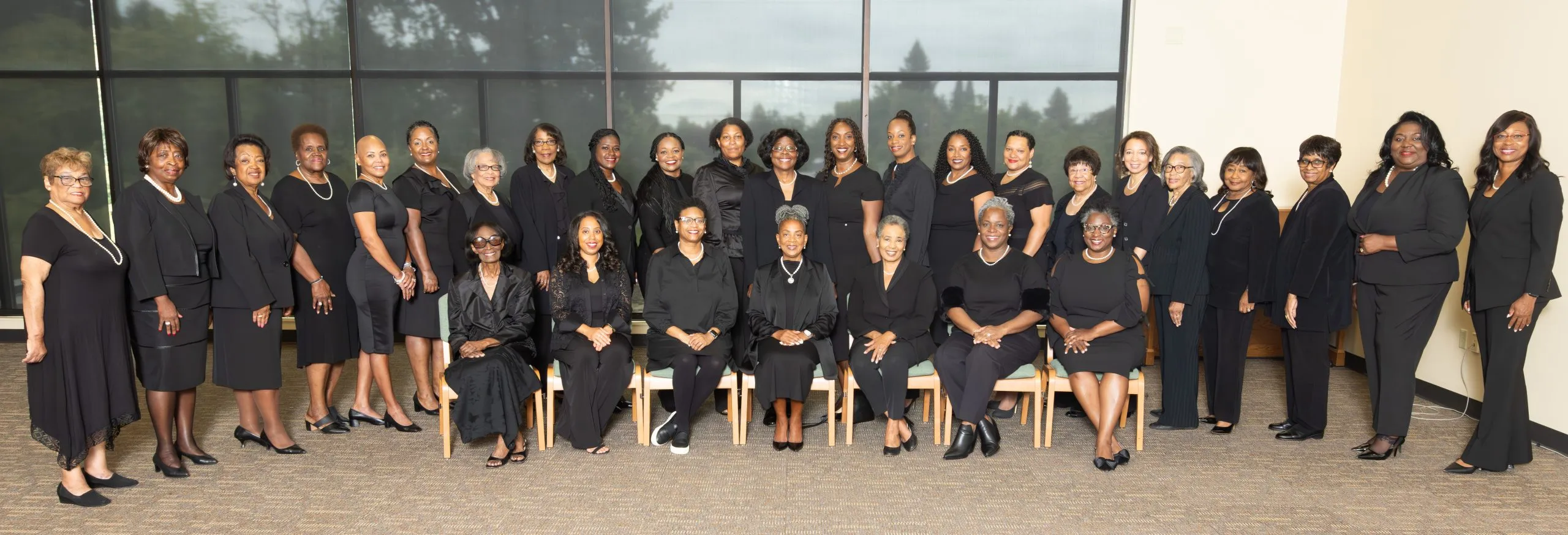Park City, Utah, January 19th- 29th. Considered one of the premier platforms for independent film,…
Pandemic Forces 2022 Sundance Film Festival Online for Second Year


Rigid. Rigid is a word that continues to swirl around the live Q&A after the premiere of Jesse Eisenberg’s directorial debut, When You Finish Saving the World, which is strange considering how warm and playful the group was. The primary cast (Julianne Moore and Finn Wolfhard) and the producers (Emma Stone and Dave McCary) joined Eisenberg and Sundance Film Festival director of programming Kim Yutani to discuss the tense, yet tender film about family, but they keep just coming back to rigid. Even in the chat, a participant named Laura reaffirmed Eisenberg’s use of that word to describe his two lead characters: “Rigid is an understatement. ‘I’ll be ready in five seconds.’ and she leaves at 5.1 seconds.”
Portland, OR. The 2022 Sundance Film Festival opened on January 20th, debuting its lineup of new documentary and narrative films via streaming for the second year in a row. Films are viewed online and there are chat sessions online as well, like the one pictured above which is Jesse Eisenberg’s directorial debut, When You Finish Saving the World. The primary cast (Julianne Moore and Finn Wolfhard) and the producers (Emma Stone and Dave McCary) joined Eisenberg to discuss the tense, yet tender film about family. The festival was planned for an in-person experience but changed to an online platform several weeks ago, due to the omicron variant surge.


Sundance Film Festival, which runs through January 30, is making virtual screenings available across the U.S. (and, in some cases, internationally) via Sundance’s digital platform. The festival includes 82 features from 28 countries, most of which are world premieres.
Sundance also includes virtual reality presentations in the New Frontier section, with multimedia storytelling and biodigital performances accessible via laptop or VR headset. On the “Spaceship,” attendees can interact with other festival-goers via avatars, in this quasi-return to the traditional community atmosphere of the festival.
While in-person screenings at Park City, Utah, were canceled, some of the festival’s lineup will still screen at independent arthouses across the U.S. beginning January 28, including the Amherst Cinema in Amherst, Mass.; SNF Parkway Theatre in Baltimore; mama.film in Lawrence, Kan.; Indie Memphis in Memphis, Tenn.; Digital Gym Cinema in San Diego; Northwest Film Forum in Seattle; and a/perture cinema in Winston-Salem, N.C.
Here’s a preview video about Sundance.
To purchase packages and individual tickets go to the Sundance website.
Below is a snapshot of some of the highly anticipated films for 2022:
“Fire of Love” (World Premiere)
Director Sara Dosa makes terrific use of years of footage and photographs taken by Katia and Maurice Krafft, a French couple whose shared field of study — volcanoes — took them to the very edge of disaster.
“Fire of Love” is a love story, about a man, a woman, and the scores of volcanoes they investigated together around the world, from rivers of molten lava to explosive eruptions that can wipe out entire villages and mountainsides. Adept at conjuring a media-friendly image of daredevil husband-and-wife volcanologists, the Kraffts were awestruck by the power of nature, which would claim their lives during an eruption of Japan’s Mount Unzen in 1991.
Dosa’s film makes very clear that the Kraffts’ early fascination with volcanoes fueled their love for each other, and their shared enthusiasm pushed them beyond where clear-eyed scientists might go (as in, paddling a rubber raft in an acid lake). The volcano footage is mesmerizing, but the Kraffts’ story makes one appreciate how individual personalities — in this case, starstruck lovers — can advance the cause of scientific knowledge. Narrated by Miranda July. In English and French with English subtitles. Screens Jan. 22.
“The Princess” (World Premiere)
There has been no shortage of documentaries about Princess Diana, often incorporating interviews with palace staff, confidantes, and royal observers offering a behind-the-scenes glimpse into Windsor intrigue, Di’s failed marriage, and her tragic end in Paris. Director Ed Perkins takes a different path in this engrossing film, eschewing interviews laced with hindsight and using only archival footage — much of it unfamiliar — that captures Diana, Prince Charles, and the other royal family members only as the public saw them, with media pundits and commoners weighing in on the scandals that rocked Britain’s monarchy, from the time she first became a fixation of the public and the paparazzi, to her death.
With no overriding narration, we are walked through what amounts to the spectacle of her public life from age 19 to 36. We see how the spark of her public persona so captivated the world — and also how years of public utterances about their marriage, and the royals’ standing in society today (from Di and Charles, and the insufferable TV talking heads) got everything so wrong.
In the process, the film makes the public’s insatiable need for Princess Diana — a woman they truly did not know — partly culpable in the media’s hounding of this young woman. By the end they would hurl flowers onto her hearse. Screens Jan. 22. Will be broadcast on HBO later this year.
“Tantura” (World Premiere)
The desire to erase a painful past can be so strong that it feeds denialism, even when the evidence points otherwise. In 1948, the seaside village of Tantura in Palestine became the site of a fight between Israeli forces and Arab locals. Residents of the town were soon relocated, as seen in carefully staged newsreel footage. But years later, academic researcher Theodore Katz conducted interviews with survivors, from both sides, and postulated that Israeli troops had committed mass murder. His paper became the target of a libel suit by Alexandroni Brigade veterans.
When a village is, in the words of one, “erased,” the serenity of its current incarnation is disquieting. But with little physical evidence at hand, director Alon Schwarz (“Aida’s Secrets”) pores through the interview tapes, and conducts new interviews, that tend to muddy the historical record even further. How transient is memory? And how is the past, and justice, served by the desire to let sleeping dogs lie? “I’m fed up remembering bad things,” says one aged former soldier. In English, Hebrew and Arabic with English subtitles. Screens Jan. 22.
“Nothing Compares” (World Premiere)
“They broke my heart and they killed me, but I didn’t die,” says Sinéad O’Connor. Using archival footage, recreations and new interviews, Kathryn Ferguson’s insightful film tells the story of the Irish singer, and of the success and scandals that have followed her since she first burst onto the scene with her albums “The Lion and the Cobra” and “I Do Not Want What I Haven’t Got.”
For more than three decades, O’Connor’s non-conformist life, and art, has been a searing reaction to abuse she suffered at home; to discrimination and misogyny she experienced in the music industry; and to the condemnation that came from the press and the public whenever she opened her mouth and expressed something other than music. Rapper Chuck D notes, “The powers-that-be weren’t ready for her.”
Spoiler Alert: She’s not all that apologetic.
We also gain understanding about her collaborations with other artists, as well as how O’Connor’s image was marketed by a nervous label, which in hindsight seems silly: Had they never seen a punk, buzz-cut, pregnant singer before? Screens Jan. 21, 23.
“All That Breathes” (World Premiere)
In New Delhi, the population of kites — large birds akin to hawks — is cherished, but with the increased pollution in the skies, the birds are suffering. Brothers Mohammad and Nadeem Saud and their assistant, Salik Rehman, have therefore taken upon themselves the noble pursuit of tending to sick and injured birds, which they collect and nurse at their cobbled-together Wildlife Rescue clinic.
The good news: A profile in The New York Times inspires some funding so that they can build a proper animal hospital. The bad: Rescues are exhausting, and the chance to go abroad to study interferes with the work that needs to be done.
Shaunak Sen’s meditative film focuses on the unique bond that the men share with their patients, and how their efforts are an often-thankless sacrifice. Their secret? They believe what they are doing is the right thing. Not doing it is unimaginable. In Hindi with English subtitles. Screens Jan. 21, 23.
“Riotsville USA” (World Premiere)
In the late 1960s and early ’70s, efforts to combat riots in America’s streets (including the Kerner Commission’s study on civil disorder over racial inequities in America, which primarily resulted in more police funding) led to the erection on U.S. Army bases of fake towns, in which anti-riot tactics were demonstrated and filmed. With Army soldiers dressed down as rioters, Black “provocateurs” and gunmen engaged in looting and violence, security forces showed how to handle such miscreants, to the delight of assembled military and police officials.
Sierra Pettengill, director of “The Reagan Show” and “Town Hall,” and producer of the Oscar-nominated “Cutie and the Boxer,” blends the unearthed training footage from the government and archival footage from broadcast media to examine how these faux riots altered the dynamics of urban clashes between protesters and police — and maintained an institutional power structure.
The film casts a wide net, showing not just how Chicago police addressed demonstrators at the 1968 Democratic Party Convention, but also how police in Miami engaged in tactics during the Republican Party Convention that only enflamed the population more, such as indiscriminately spraying so much tear gas in one neighborhood that residents had to flee their homes. Screens Jan. 21, 23.
Recent Posts
2025 Portland Rose Festival Plans are Set
Portland, OR. The Portland Rose Festival has inspired the public to gather and celebrate against…
Portland Art Museum Exhibit Will Highlight Contemporary Art from the Collections of Jordan D. Schnitzer
Portland, OR. Opening in September 2025, the Portland Art Museum (PAM) presents Global Icons, Local Spotlight:…
VIPs Gearing up for Classic Wines Foundation Gala
Portland, OR. Organizers say the "Salon de Vin" benefit for Classic Wines is shaping up.…
Diamonds & Denim Gala Will Benefit The Links, Inc.
Portand, OR. The Portland Chapter of The Links, Incorporated, and the White Rose Educational Foundation…
Nonprofits Honored as Providence Health Plan Celebrates 40th Anniversary
Portland, OR. Providence Health Plan recently celebrated its 40th anniversary with a totally rad 1980’s…
Oregon Historical Society Hosts History Makers Gala
Portland, OR. The Oregon Historical Society’s (OHS) annual Oregon History Makers Awards & Dinner recognizes…


